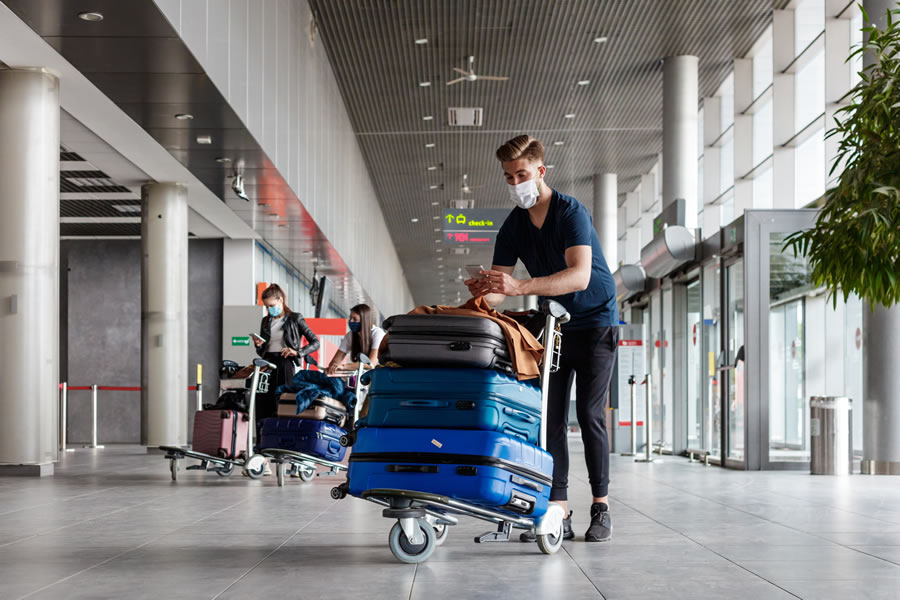The responsibility of states to control migration across borders is a long-established tenet of international governance. Every state in the world has implemented immigration controls that require travelers to produce valid documentation upon entry to and often exit from their country. These activities are vital to keeping citizens safe and critical for a nation's prosperity through sustainable trade and tourism.
Challenges present opportunity
The confluence of several factors now presents states with an opportunity to reimagine their border control operations. Most immediately, the COVID-19 pandemic has sharpened awareness of the need to enforce robust checks across all ports of entry – be they land, sea, or air – to protect citizens' health and ensure bio-security.
In Europe, the introduction of the EU's Entry Exit System (EES) regulation across the Schengen Area is driving governments to renew their border control infrastructure to capture additional information from third-country nationals (TCNs). This regulation provides an opportunity to leverage the benefits of automation and self-service across the entire traveler population.
Finally, new technology, coupled with enriched data, makes it possible to streamline border processes and realize the benefits of seamless and contactless journeys – improving traveler experiences while protecting their health.
The tools and systems used to carry out these activities – immigration control systems, document scanners, biometric capture devices, automated border control (ABC) equipment, mobile clients, risk assessment modules, watchlists, and visa databases – can all be considered part of the overall border control approach. The effective integration of these elements can improve a state's monitoring and control of migration.
A holistic approach
Taking a holistic view of the border operation is the best way to increase security, improve facilitation and allow for robust decision making across all ports of entry and exit. Air, land, and sea borders work very differently, and temporary or emergency border checkpoints are often necessary. The balance of the different technologies in each scenario, which is unique in each country, determines the border's overall efficiency and effectiveness. These technologies and processes need to work in concert with each other, using shared intelligence as a backbone for robust decision making.
The systems used at the border control must deliver some core capabilities: robust documentation checks, capturing travelers' biographic and biometric information, and a repository of traveler migrations. However, these must be supplemented to create a first-class border fit for the modern world. The systems should be fully integrated with all relevant risk assessment systems to assess each traveler before their transit is approved thoroughly. Many travelers will require visas to enter the country, so integration with visa management systems is vital to confirm the real-time status of travelers' visas. Often identity management systems contain records of traveler biometrics, and these should also be incorporated into the overall border control ecosystem to help combat identity fraud. And this should all work equally at the different modes of entry: air, land, and sea so that the same level of rigor is applied in those situations.
The modern traveler expects simplicity, predictability, and contemporary technologies to simplify their travel experience. Incorporating mobile and self-service offerings to help the traveler cross the border as efficiently as possible will become the norm. Travelers always express a strong preference for self-service technologies, which should form a significant part of the overall border control system. These technologies also make the operation more efficient and contain features that help increase security.
Ideally, the systems should be modular enough that they can take advantage of previous investments. For example, if automated border controls are in place, it should be possible to integrate those into the new ecosystem rather than replacing functioning equipment.
The need to optimize the use of physical space has perhaps never been so vital as we emerge from the travel slump caused by the COVID-19 pandemic. Social distancing measures will be in place in immigration halls, and capacity limits will be introduced as health safety measures. This makes it even more important to process people efficiently as traveler volumes increase again. In fact, by making an assessment of travelers' health in advance of travel, through a declaration or Passenger Locator Form, an authority to travel can be issued to the traveler. This can be used to expedite the arrivals process by removing the need for time-consuming manual inspections of test certificates.
Looking ahead, we envisage an even more integrated traveler experience from the point of reservation through to the return journey. SITA is developing new concepts for the submission of biometric information in advance of travel to enable traveler identity verification – and ultimately achieve the goal of seamless travel without the need for extensive document checks upon arrival. This biometric information could even be used at other stages of the traveler's journey – such as access to hotels and sporting events. Crucially, the traveler should be in control of their data, and they are the ultimate authority to share their biometric data – ensuring informed consent and the exercise of discretion over who receives this sensitive information.
SITA's vision of harmonious border controls is underpinned by over twenty years of deploying border management solutions, and SITA Border Control provides the capabilities described above. Our understanding of this domain's complexities and our knowledge of integrating with various government and third-party solutions resulted in partnerships with over 60 governments and their processing of over 2 billion customer journeys with SITA's tools. This heritage and proven excellence in delivery is a record of which SITA is rightfully proud.
Learn more about SITA Border Management




 Share
Share





0 Comments